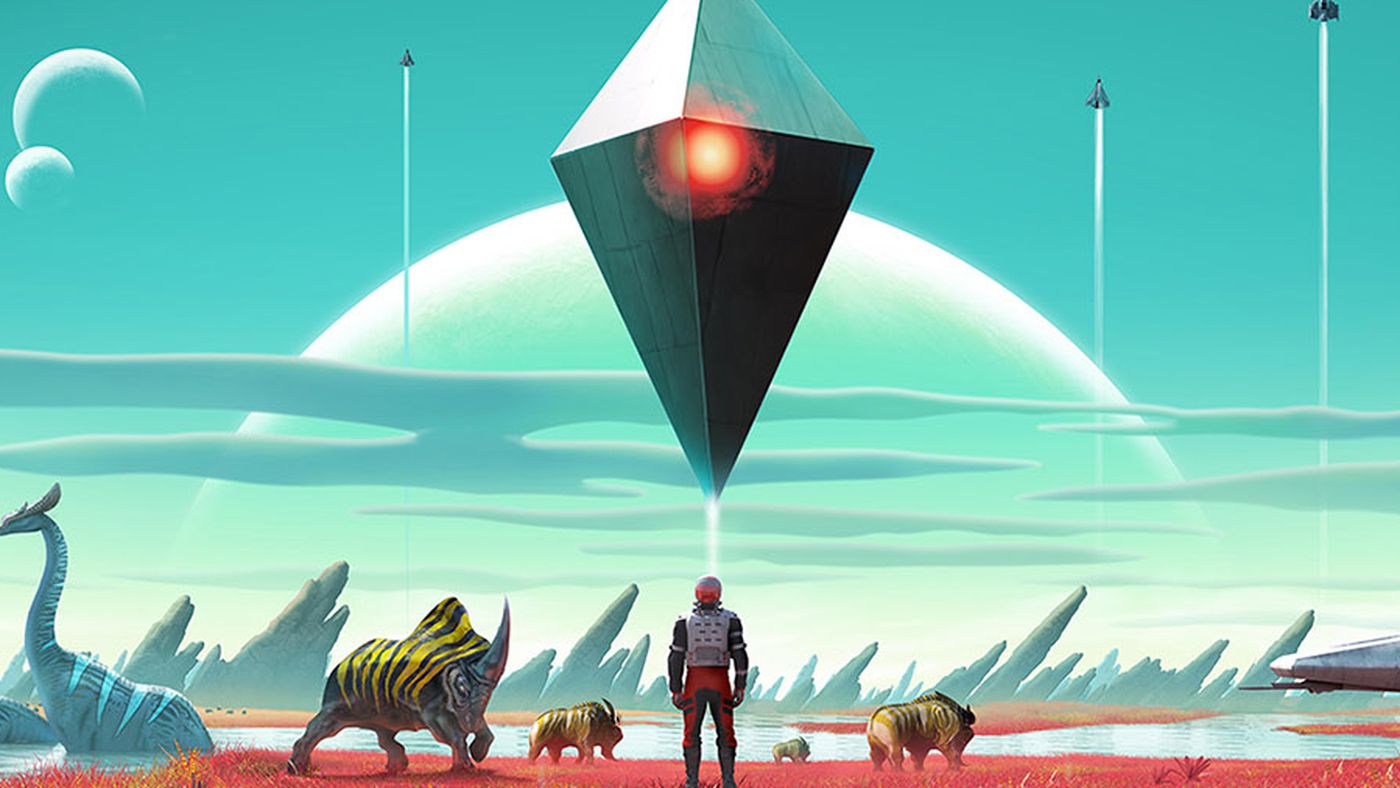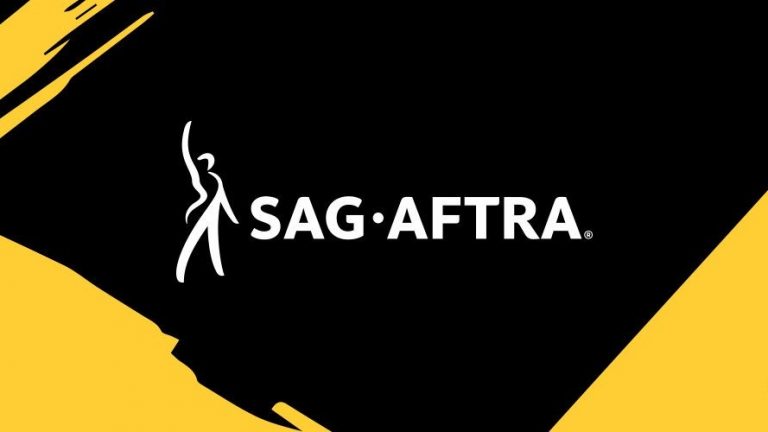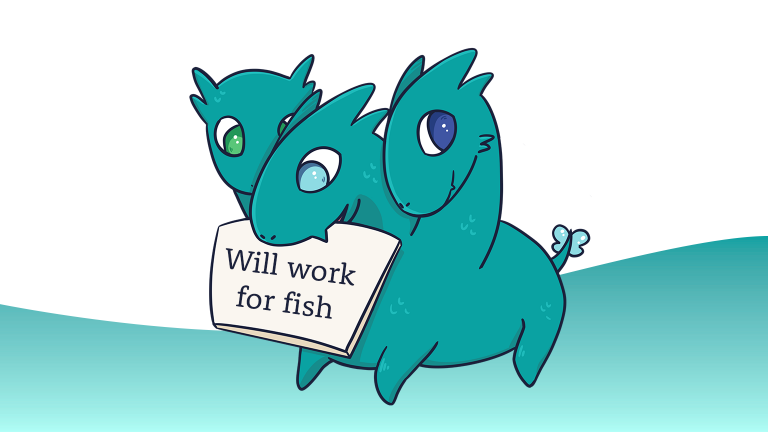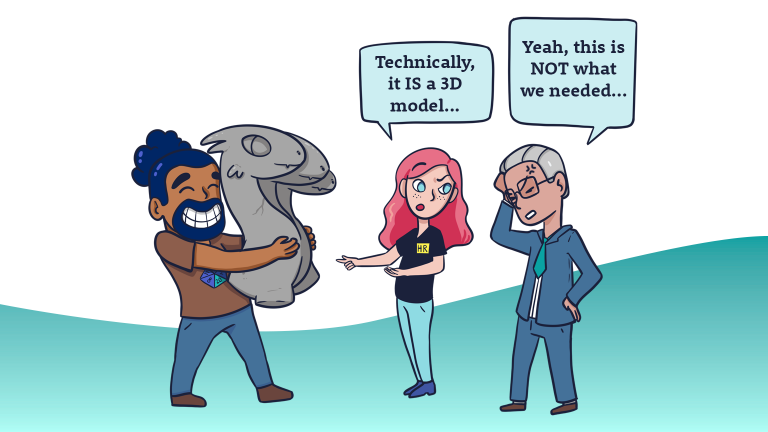Don’t Lie About Your Game: The Relationship Between Marketing and Game Development
The relationship between game development and marketing can be a contentious one. Many times when a game gets a negative reaction from fans on release, the reason is as much about how the game was marketed than anything else. Making sure that the public’s expectations are aligned with reality is essential to the success of any game.
Let’s explore some of the ways that the relationship between marketing and development can break down and how to adjust when it does.
One note, this article is not meant to vilify the discipline of marketing or the marketing professionals that practice it. Marketing is an important piece of the puzzle when it comes to making and selling games in a profitable and sustainable way. Instead, this article is meant to highlight some of the dangers that can come when marketing and development are not aligned properly.
What Do You Mean by Lying About Your Game?
Let me describe a nightmare scenario and you can judge if it sounds realistic or not. You recently finished development on a game that was released to moderate success. It wasn’t the breakaway hit that you had hoped but you recognize that the game wasn’t perfect and there was a lot of room for improvement.
You decide to make a vision video of how a theoretical future entry in your new franchise could potentially look one day. This video would be pre-rendered but made in a style that resembles gameplay.
You get to work and everything goes great. This kind of video is a ton of fun to make, you get to be creative and throw in all sorts of fancy effects that a game running in real-time could never manage. Add to that the fact you can afford to use higher-res textures and more detailed models, the result looks fantastic.
You send the video off to your publisher and you’re confident that it’ll help them become as excited about the future of the franchise as you. Almost none of the work you did on the video can be reused for the final game but you knew that when you started.
It seems to have the intended effect as they decide to use your video for a showcase at a major expo. Millions of people end up watching the video you thoughtfully crafted and they love it too. All seems right with the world.
Then, an overzealous marketing guy announces that the video is running in real-time on a next-gen console! You have no idea where he got that idea but you’re not worried, no one is going to believe it anyway. It’s obviously not true and anyone in the know could tell that at a glance. Unfortunately, most consumers aren’t in the know and it quickly becomes clear that people do believe it. And worse yet, your publisher calls you up and asks you what it would take to make it true… In the next year.
You now have the job of building something from scratch today that you had hoped might be possible many years from now.
That might seem outlandish but that is almost the exact situation that Guerrilla Games found itself just prior to making Killzone 2. They had planned to develop the follow up to the original Killzone on the Playstation 2 but ended up shifting gears into making a next-gen Playstation 3 game instead due to the above reason.
Why Lie About a Game and How to Avoid It?
There are a number of key reasons why marketing’s messaging sometimes diverges from reality. I have outlined the most common reasons, along with some potential solutions below:
Poor Communication
Poor communication is one of the most consistent reasons for false marketing claims. Dishonest marketing is inherently a communications issue. Conveying something untrue to the public is itself bad communication, but in many cases, the real fault comes much earlier in the process.
In the above example, the person that claimed the vision video was running in real-time probably wasn’t being intentionally misleading, they may well have believed that was the case. This misunderstanding could be because they didn’t know enough about the game making process to know better, or because they hadn’t even watched the video closely and were making a guess based on the limited information available to them. Either way, the solution is better communication.
These issues are much more common when the people making the games and the people selling them are not one and the same. This un-relationship is often the case when your game is being marketed by your publisher, a for-hire marketing firm, or a first-party platform partner.
You’ll always have less control over your messaging when the people doing press releases or providing media statements are several layers of bureaucracy and convoluted hierarchy removed from the people on the ground. This leads to situations where marketers are not sure who to ask for certain information (such as a hyper-specific technical detail or the reason why something works the way it does). If they have no clear way of finding something out, the path of least resistance is to default to a half-truth or to dodge the question altogether which can also cause confused messaging.
Outsourced marketing is not the only cause of poor communication though. Even small teams can fall foul of it. Just because the person taking the lead on marketing is the Creative Director of the game or the CEO of the studio, doesn’t mean that there aren’t still plenty of opportunities for things to fall through the cracks.
This situation often happens when the people developing the game on a day-to-day basis see marketing as ‘not their problem’ and instead choose to keep their heads down and avoid getting involved. This issue manifests when teams see marketing as a ‘necessary evil’. Something to be endured but not welcomed. In reality, embracing the marketing process as early as possible and making sure that the people making the game are involved in shaping the narrative of how that game is sold will usually lead to more accurate marketing and less room for error.
Example: Borderlands 3 – Randy Pitchfork (the CEO of Gearbox the studio behind Borderlands) went on Twitter to announce that the game would not have microtransactions. The studio would later clarify that this was not the case and on release this and other issues caused the game to be review bombed.
How to mitigate:
- Make sure that the lines of communication are clear and that everyone involved is aligned. Dedicate a technical content writer from the marketing team to own this communication, and to serve as a liaison with the development team.
- Try to create clear guidelines on what is or is not going to be in the final game (if something is at risk of being cut, try not to evangelize it).
- Make sure the right people are involved in shaping the message early on. This means people from design, development, and production should be regularly interacting with marketing.
Aspirational Marketing
Whereas the above issue of poor communication is a fundamental misunderstanding about what the game is. Aspirational marketing is a misunderstanding (or willful ignorance) about what the game will be.
One of the most common ways this happens is with graphics. Any gameplay trailer that is released many months, or even years, before release is undoubtedly using non-final code that hasn’t yet been optimized and refined. To make up for this, those trailers are normally running on beefy hardware which would be much more powerful than what your average consumer could reasonably be expected to have. And, in the case of console games, hardware that they couldn’t use even if they wanted to.
This reality is understandable and somewhat of an accepted practice. Every game that does this is making a bet that with enough optimization, workarounds, and development wizardry, they will get there in the end. Unfortunately, that’s a bet that developers lose as often as not, and some stretch it to the point where it’s hard to believe they ever had good intentions.
The broken promises are so common that there’s a term for it, Bullshot, first coined by Penny Arcade, it came about due to the next-gen Xbox 360 trailer for Madden NFL 06 that showed pre-rendered ‘gameplay’ with graphics so good, they still haven’t been matched by recent releases over 15 years later!
When it comes to graphics, most flashy trailers can be taken with a grain of salt and as long as you apply a healthy amount of skepticism, you can avoid being too disappointed. The same, however, is not true when it comes to features.
Having developers say that an awesome-looking mechanic, level, or even character will be in a game, only to realize at release that they lied is way less excusable, and unfortunately, something that happens more often than it should.
That brings us to the poster boy for false marketing, No Man’s Sky. For anyone who doesn’t know, No Man’s Sky was a game released in 2016 that promised an almost infinite universe to explore with Trillions (capital T) of planets to discover with your friends. All with unique flora, fauna and a host of other rich mechanics to play with. Instead, they delivered… just a game. No multiplayer, and planets that mostly felt the same besides some superficial differences.
The team behind No Man’s Sky later went on to redeem themselves by releasing a large number of free expansions and continuing to support the game to this day but the initial reaction was so negative that Sean Murray the Managing Director of Hello Games received death threats.
It’s important to note that the release of No Man’s Sky also suffered from other issues mentioned in this article, including poor communication and uncontrollable hype (which we will talk about shortly). Needless to say though, No Man’s Sky is far from the only example of a game which disappointed its fans by the thousands due to being unable to keep the promises it made about features that would be present at release.
The overzealous marketing of both graphics and features are somewhat explained by the prominence of something called the vertical slice demo or promo. A vertical slice is where a development team chooses a section of the game, such as a single level, and tries to create a version of it that is as close to what the final game will look and play like as possible.
Vertical slices are a valuable development tool but they are often also used at expos or trade shows to show off the game. The problem there being that these vertical slices are often made so early in development that they are stitched together with code that is tantamount to duct tape and string being used in home construction.
I wouldn’t go so far as advising you not to use a vertical slice in your marketing, but it is worth being very careful about how you use them and try not to include moonshot features that could end up on the cutting room floor.
Example: The Witcher 3: The Wild Hunt – While still well-received, The Witcher 3’s final release was a significant downgrade graphically from early promo footage, even when playing the PC version with top-end hardware.
How to mitigate:
- Set realistic expectations from the outset (under promise and over deliver).
- Use vertical slices carefully and do not make them public too early in development.
Unforeseen Lies
In hindsight, it’s often easy to realize why aspirational marketing didn’t work out. A lot of the time it boils down to “We were trying to make something better than anyone else ever had, with less time and resources than those who came before.”
Unfortunately, there are a lot of issues you can’t possibly predict. Things like global pandemics, major market shifts, or even personal tragedies within your team. All of these things and more can crop up and cause you to break the promises you made. Turning you into a liar against your will.
Of course, the real problem with things that are hard to predict is that they’re also hard to avoid. The best advice we can give is to identify the things you can predict (here’s an article to help with that) and then leave room for a certain amount of unpredictability in your development process(we have an article for that too).
Luckily having to go back on your word because of something outside of your control is a lot easier to explain than most of the other issues on this list.
Example: Any game delayed in 2020
How to mitigate:
- Carefully identify what disasters ‘might’ strike.
- Expect the unexpected.
- Build extra time into your estimates to account for unplanned setbacks.
Tactical Lying
Anyone with experience of being lied to (or lying) knows that the reasons people lie are often rooted in fear. Fear of inadequacy, fear of failure, fear of being judged. This is the case with business communications just as it is with personal communications.
The difference with business is that (most of the time) there are lots of people whose egos are invested in a company, along with their money or livelihood. That means you have a lot of people who are incentivized to protect that investment.
This can become a major issue if it becomes apparent your game is… bad.
That leaves you with a lot of stakeholders who will try to find a way to salvage the situation. And lying could be a better solution than you would think.
Let’s take a look at the games industry’s brother from another mother, the movie industry. At some point, movie execs figured out that if you have a stinker of a movie on your hands, you can still get loads of people to come and see it on opening day as long as you put a ton of money into marketing it. This works particularly well if there’s a big name actor or director attached to the move.
Create a compelling trailer (assuming you can find at least 3-5 minutes of decent footage to make one with), ‘forget’ to send out review copies to critics, splash your big star on the side of some buses, and voila! Tens of thousands of people should line up to your movie on opening night. If done properly, you might still make a profit before everyone realizes how terrible your movie is and tells their friends.
The same tactic can work with games too. You can often tell this has happened when a large studio imposes embargos on the media which means that their reviews are only published on the day of release.
The issue is, of course, that when all is said and done, the people who made the game are the ones left holding the bag, and their reputation will suffer because of it. Particularly frustrating when a small delay or some extra resources might have been all it would have taken to get the game in shape.
It’s worth mentioning that this technique does not work as well with games as a service (GaaS). GaaS require sustained and continual buy-in from consumers in order to be successful. That doesn’t stop studios and publishers from trying though. Releases like Anthem have poured fortunes into marketing in order to get as many people on board as early as possible, hoping that the initial player base would stick around long enough for them to fix the issues with the game and allow them to get it to where it should have been at release. In the case of some games like Destiny, it worked. In the vast majority of cases, it does not.
Example: Assassin’s Creed: Unity – Unity had a review embargo that ended 12 hours after the game was available to buy. When the reviews finally dropped they were worse than expected with outlets like Polygon giving the game a 6.5/10 and blasting the game for being buggy and feeling unfinished.
How to mitigate:
- Diagnose why confidence is low in your game.
- Identify if your game can be ‘fixed’.
- Don’t put together major marketing deals, especially using more conventional channels like television, until your game is well into development.
- Delay your game if needed.
Uncontrollable Hype
One particularly hard to avoid form of marketing misalignment is hype. The problem here is that the unrealistic expectations are not set by you or your team, but instead by your customers.
This hype problem is particularly common with large and well-loved franchises, especially if there has been a large gap between releases. Fans are so willing to believe that your next game will be ‘the best one yet’ that they will take a mile for every inch you give them.
The issue is that most gamers are looking for games that are revolutionary and which make huge leaps forward and make everything that came before it look outdated. In reality, most games are instead evolutionary, making incremental improvements that build on what came before.
The worst thing about the hype train veering off the rails is that it can be hard to justify ‘managing expectations’ when doing so likely means reducing fans’ excitement for your game and probably reducing how much profit it’ll make in the process.
If you’re interested in seeing a hype train crash in slow motion, take a look at what Cyberpunk 2077 is currently going through. It’s impossible to say how good the game will be when it’s released but it’s clear that the cracks are starting to show. CD Projekt Red have already pushed back one of the most anticipated releases of all time 3 times and counting as of writing, presumably so they can frantically try and get the game to the quality level its fans expect. We are starting to suspect that all the delays in the world won’t help it reach the unrealistic expectations that have been set for it.
Example: Star Citizen – Star Citizen has raised XXX million in crowdfunding with an estimated release date of 2014. Since then it’s release has been continually pushed back and their tactic for keeping people interested involves promising more and more features as well as releasing flashy cinematic trailers with big name stars in. Many people are starting to doubt the game will ever be released, let alone meet the insane expectations that have been set for it.
How to mitigate:
- Find ways to manage expectations in ways that do not diminish the excitement of the fans.
- Try not to let 3rd parties ride your hype train with branded deals and similar arrangements that lock you into releasing at a certain time.
- Use the early success of your game to help justify adding resources to it or delaying it to make good on early promises.
- Continue support after release if necessary.
Compulsive Lying
This is by far the most insidious and harmful type of marketing tactic on this list, and luckily the rarest. Bold-faced lying about your game being one thing, only to have it turn out to be something entirely different, is completely inexcusable.
This type of lying is often excused as aspirational marketing, or even as unforeseen lies. But, you can tell it’s not the case when it starts to happen over and over again.
This type of lying often originates from one person, someone who is particularly good at building hype with dubious promises. This can be most dangerous when that person is high up in (or even leading) your team.
Compulsive lying is most famously demonstrated by Peter Molyneux. Peter is the founder of Bullfrog, Lionhead and 22cans. He managed to make a name for himself over his decades long career for building unprecedented levels of excitement for his games with promises that seemed too good to be true, and which later turned out to be exactly that.
This tendency reached its apex when he got thousands of people to tap away layers of a giant cube (and spend money to do so) in his game Curiosity: What’s Inside the Cube? All with the promise of a ‘life changing’ prize at the center. When one Bryan Henderson finally did so, he was informed that he would be given special privileges as a ‘God’ inside Peter’s next game, Populous. Years later that prize had still not been awarded.
Quick note, I played Peters cube game and even though it was a thoroughly uninteresting game in and of itself, I was genuinely excited by the prospect of reaching the centre, even though I knew Peters dishonest reputation at the time. This is a prime example of how powerful a good lie can be.
Finally, one way in which dishonest marketers can be spotted early is if they say “I don’t need to know how the game works, I only need to know how to sell it.” If you hear this from someone on your team, fire them.
Example: Alien: Colonial Marines – Colonial Marines was advertised with impressive graphics, and tense dynamic looking gameplay befitting of the source material. Instead, the game was released buggy and half finished, and the AI controlling the Alien enemies was almost nonexistent. In stark contrast to the promo footage which was shown before release. The gulf between promise and reality was so large the the a lawsuit was filed and SEGA ended up paying out $1,250,000 to the plaintiffs for false advertising.
How to mitigate:
- Fire the people responsible.
- If the people responsible are essential, isolate them from your marketing or at least try to set guidelines for what they can and can’t say.
Can False Marketing Be Justified?
If done in a way that harms consumers, no. There is, of course, a brand of mostly harmless marketing exaggeration that you are probably already familiar with, whether you’re aware of it or not.
The above advert insinuates that if you use Lynx body spray, literally thousands of attractive women will instantly want to sleep with you. The premise is so absurd that no reasonable person would believe it, but on a subconscious level, it has an effect. I wouldn’t exactly call it the gold standard of marketing but cosmetics brands like Lynx, as well as brands that sell chocolate, alcohol and even burgers, all use it to great effect.
At the end of the day, you need to be able to carefully distinguish the difference between harmless lies and harmful ones. We suggest you try to avoid any of the kinds we laid out in this article but make sure whatever you do is closer to the uncontrollable hype and unforeseen lies end of the spectrum than the tactical or compulsive lying end.
We hope this article helps you manage your relationship between development and marketing. Feel free to comment below if you have any other tips for our readers.








Great article! Thanks for the interesting read. 🙂